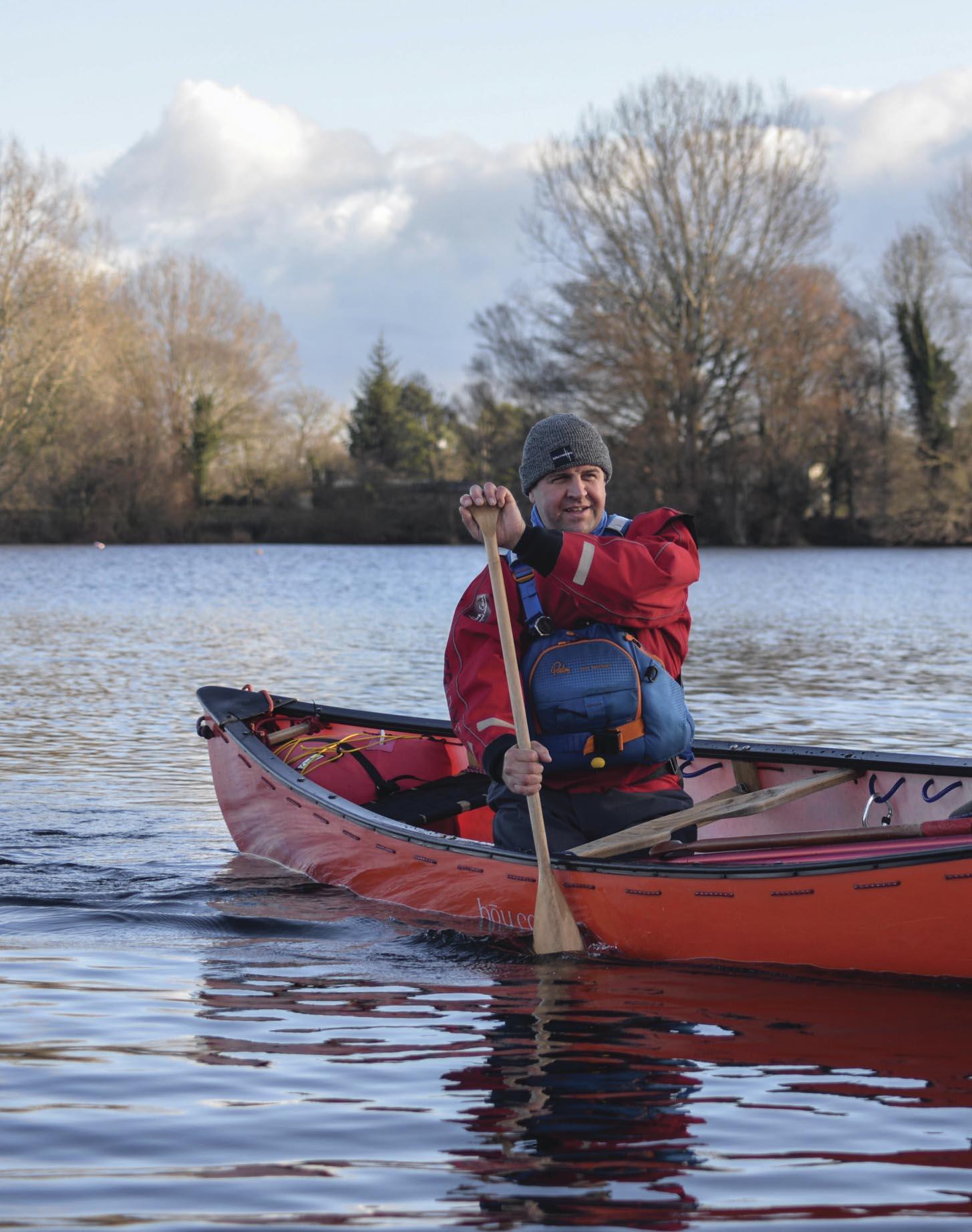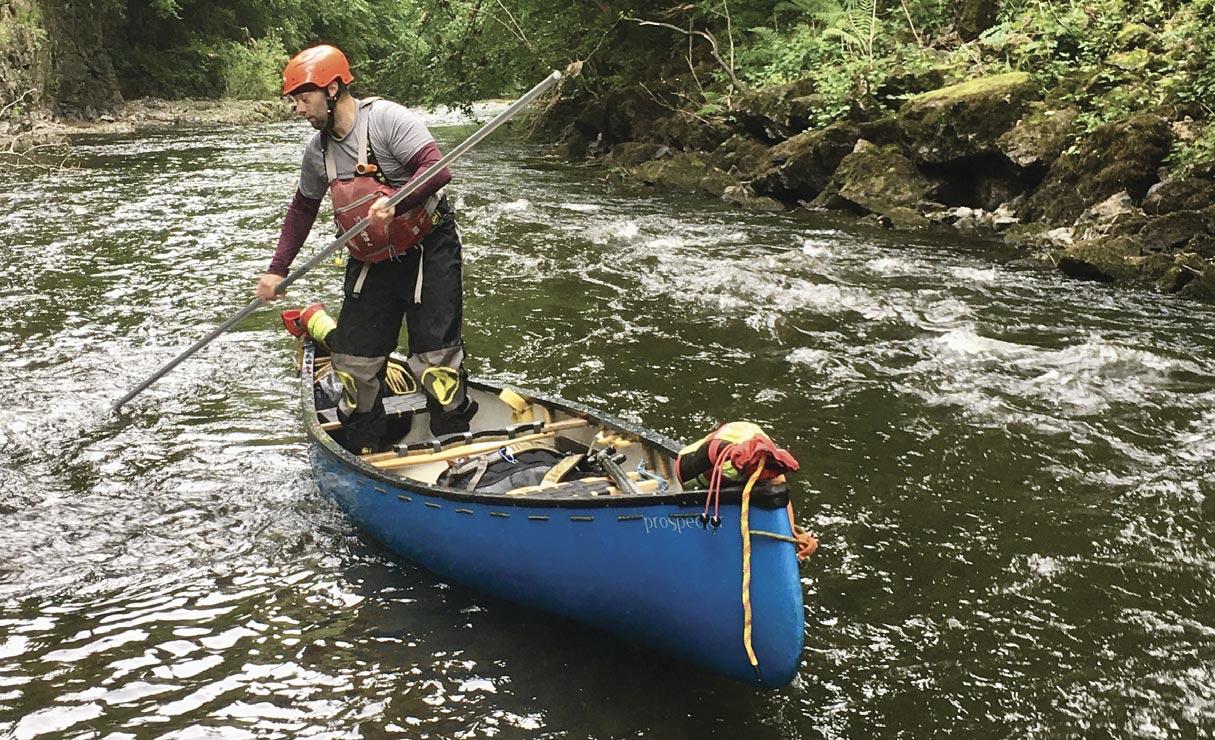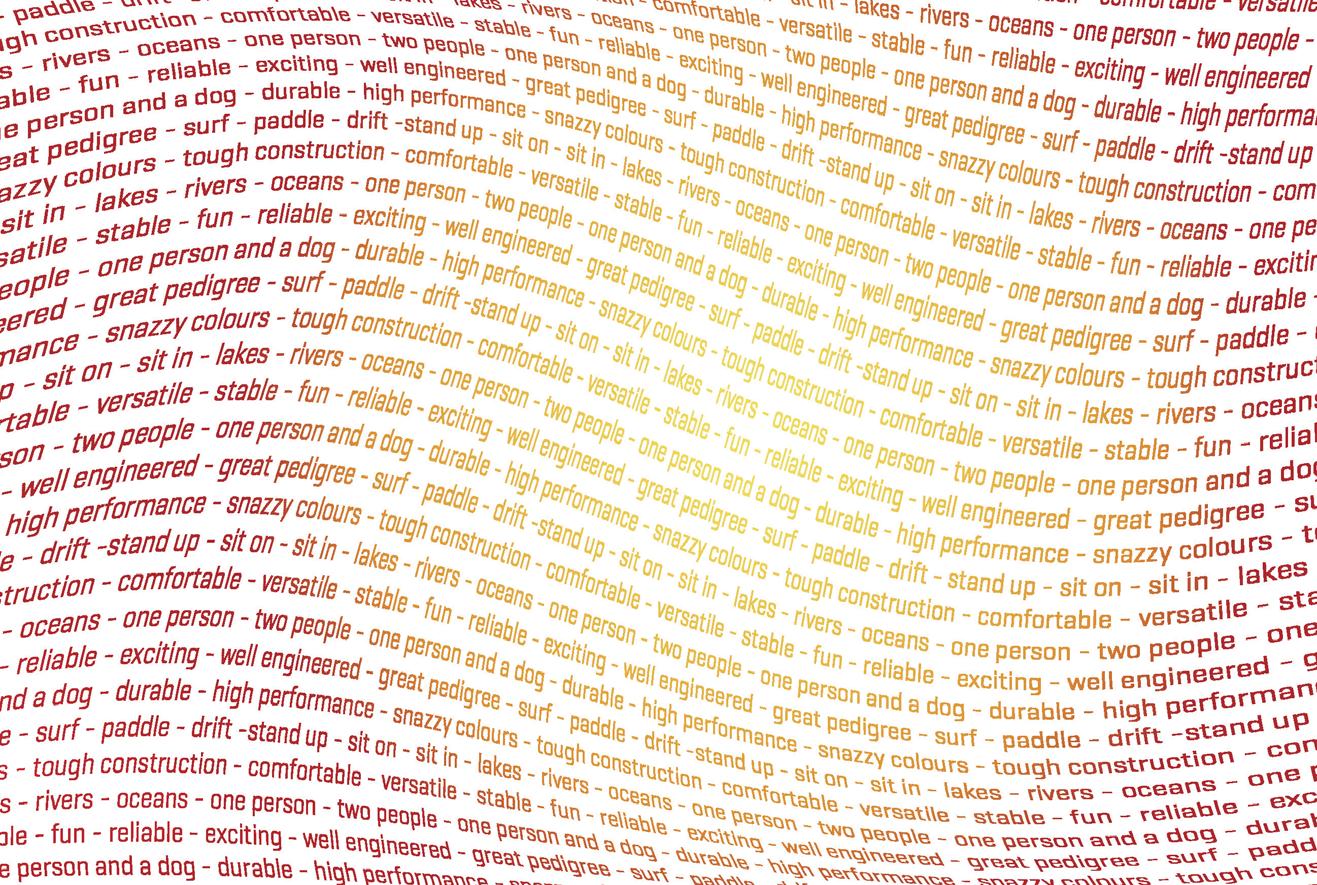
8 minute read
The beginnings of Flow
ADAM EVANS
The beginnings of
Advertisement
FLOW
Photos: Andrew Oughton, Adam Evans and Angela Ward I once heard an adventure sports coach describe psychology as being, “All about thinking,” which is about as accurate as saying kayaking and canoeing and stand up paddle boards are all about using sticks in the water. It’s a part of it yes, but in reality they are a very small part.
Adam is a professional mental game performance coach, a British Canoeing Guide Scheme Assessor, Advanced Canoe Leader and Canoe Coach and also is kindly supported by Hou Canoes and Palm Equipment. www.mentalgame.co.uk

Our thinking can sometimes be quite analytical, considered and conscious, but not entirely. Although it is conscious and so we do know we are ‘thinking’ whether or not it is accurate, we do know we are thinking it, and when we know we’re doing it, and it is conscious so we can analyse it and evaluated it, which is the basis of Cognitive (thinking), Behavioural (doing happening) and Therapy (improving). However, there is something more important than our conscious awareness, it’s our non-conscious, often referred to as the unconscious. We do so much that’s beyond our own awareness and this has a significant or probably greater impact than the things that happen within our awareness. Our non-conscious faculty is the part that does much of the perceiving of the world automatically, it can be sometimes inaccurate, it’s very subjective, it’s highly impactful on us and it’s automatic.
Understanding that when we’re paddling at our best we are in a state of Flow sometimes called the Zone, when we are in Flow it’s often said we are of ‘no mind’ or without significant cognitive effort, we are doing things automatically, fluidly, non consciously, with a sense of focus with the right balance and ease but also engagement. When we are out of Flow we can often have a sense of agitation and stiffness often through over thinking or disengagement through lack of challenge. The identifier of the Flow state, psychologist Mihaly Csikszentmihalyi, described it as, “A state of concentration or complete absorption with the activity at hand and the situation. It is a state in which people are so involved in an activity that nothing else seems to matter.” It’s a state of focus on the task with a sense of natural ease in the activity, and with a balance of engagement challenge and control. The opposite of flow could be described as anxious or disengaged.


Many performers and coaches mistakenly think they need to be hyped up to get the best performance, whereas a sense of focus and calm is often more optimum. So if Flow state is so great how do we get to it more reliably? Well as much as we warm up our bodies to get into a physical Flow we need to warm up our minds also.
ENGAGING MORE QUICKLY


There are many ways, depending on what needs to be warmed but here are a few simple tools that we can use to begin to train ourselves to engage more quickly with Flow, to get the most out of our paddling performance. To some extent most human beings like predictable patterns and routines, it’s the need to know that a set of steps will likely result in a predictable outcome. Rituals form a part of our lives. The trick is to set up a pre-paddling routine that you can hone and develop with intention as a series of steps to prime your mind and body to be ready to paddle. Most high-performers in any discipline will create these ‘organising the self’ rituals, paying attention to details while focusing on the simple process of preparation. It can help to devote the time to create a simple set of proper steps that will result in you intrinsically knowing that you have organised things and are ready, this will be a fundamental step in getting into a state of Flow. Be methodical, be intentional and see what happens. Do it the same way each time so it becomes a ritual. If you’re very clever you can use the final step of the ritual as a signal or trigger to mark the end of this routine of preparation and get into flow just like Dr Ivan Pavlov did, with triggers on dogs. Creating and maintaining Flow can be a conscious decision too, but only after some pro-active training. Mihaly Csikszentmihalyi described Flow to be almost identical to Hypnosis, in that it involved a narrow focus of attention, a loss of selfconsciousness and a sense of creativity and potential. To proactively create and engage with a sense of Flow or even create the first steps into performance through Self Hypnosis, we need to have a deliberate and intentional mindset that balances the sense of control with a sense of naturalness and unease.
https://mental-game.co.uk

BREATHING
This can be focusing on breathing, but in a relaxed way, we can develop a technique that can not only improve our sporting engagement, but also has a positive impact in other areas of our life. This breathing training is a great way to pre-train ourselves to access Flow, it can be done at home and just prior to our paddling while on the bank. It’s very simple, get yourself into a comfortable position and breathe in through your nose for a count of four seconds. But fill your belly first, then your diaphragm, then your chest. As you fill your belly, imagine a string pulling your bellybutton outwards, sucking all the air through your nose. Do the same for your diaphragm and then your chest. When you’ve completed a full inward breath, simply hold it comfortably for another four seconds, then over four seconds let your chest relax as you exhale, then let your diaphragm relax as you exhale and then finally your belly relax as you exhale. Simply wait four seconds when almost empty of air before repeating the process. Do this for about five minutes and focus on the sensation of the air coming through your nose. Pay attention to the quality of your breath through this exercise. This will have a subtle but significant and cumulative psychological and physical impact on your performance, by creating the first steps of Self Hypnosis and Flow. We can also reduce anxious feelings and stress by pre-oxygenating and flushing carbon dioxide from a system, we do this naturally, especially babies, with the natural ‘double in breath and long sigh’. As it’s done naturally, it’s done therefore unconsciously so we can do it consciously to instigate a reduction in stress and an increase in relaxation.
It’s very very simple, breathe in through your nose, and then breathe in some more to top up the lungs, this is called the double breath, then breathe out through your mouth smoothly, much like a long sigh. Do this at least three times whenever you need to reduce a little performance anxiety. According to neuroscientist Professor Andrew Huberman, this opens up the lungs alveoli to help with oxygen uptake and flushes out carbon dioxide. Both of these techniques involve using the diaphragm more in the breath, and via the vagus nerve this activates our parasympathetic nervous system, helping maintain a better sense of calm and focus, which is vital for performance and Flow. As we have taken our first step towards Flow and Self Hypnosis, it can be really useful to say something to ourselves to help our performance. When we do this it is known as a Post Hypnotic suggestion. We might want to say things such as, “I am calm” or “I am ready” or “I am focused.” These are really useful and positive, although one little point is they are fixed statements, which means they could: A be argued with, for example, “Am I really calm?”and B they are fixed, which means they don’t allow for any change or improvement. In certain circumstances it may be useful to add a sense of development or process into this Post Hypnotic affirmations and suggestion, for example, “I am becoming more calm.” Or, “I am focused more and more.” Though don’t underestimate the power of saying something with utter conviction to yourself in an authoritative and commanding way such as, “I am ready!” How we say things to ourselves is just as important as what we say to ourselves. I’ll cover a little more on this in further articles.
What’s really important to recognise with all of this is the Locus of Control is within us as performers. Meanwhile have a little fun playing with the simple techniques and notice any interesting effects they have.

WORLD-CLASS KAYAKS, CANOES AND PADDLING EQUIPMENT

paddles with 昀are
“go anywhere” dependable exploration adventure around every corner
Up and Under www.upandunder.co.uk
NS Watersports www.nswatersports.co.uk
Sea Kayak Oban www.seakayakoban.com
Windermere Canoe & Kayak www.windermerecanoekayak.com w.windermerecanoekayak.com
Robson, Zegul and Tahe Marine products are distributed in the UK and Ireland by Lyon Equipment - www.lyon.co.uk quipment - www.lyon.co.uk
35 years experience - 50 models to choose from


For expert advice on the RTM range visit an approved Test Centre

24/7 Boardsports Southampton 24-7boardsports.com North Shore Watersports Stockton-on-Tees nswatersports.com Windermere Canoe & Kayak Bowness-on-Windermere windermerecanoekayak.com OffAxis Abersoch offaxis.co.uk










